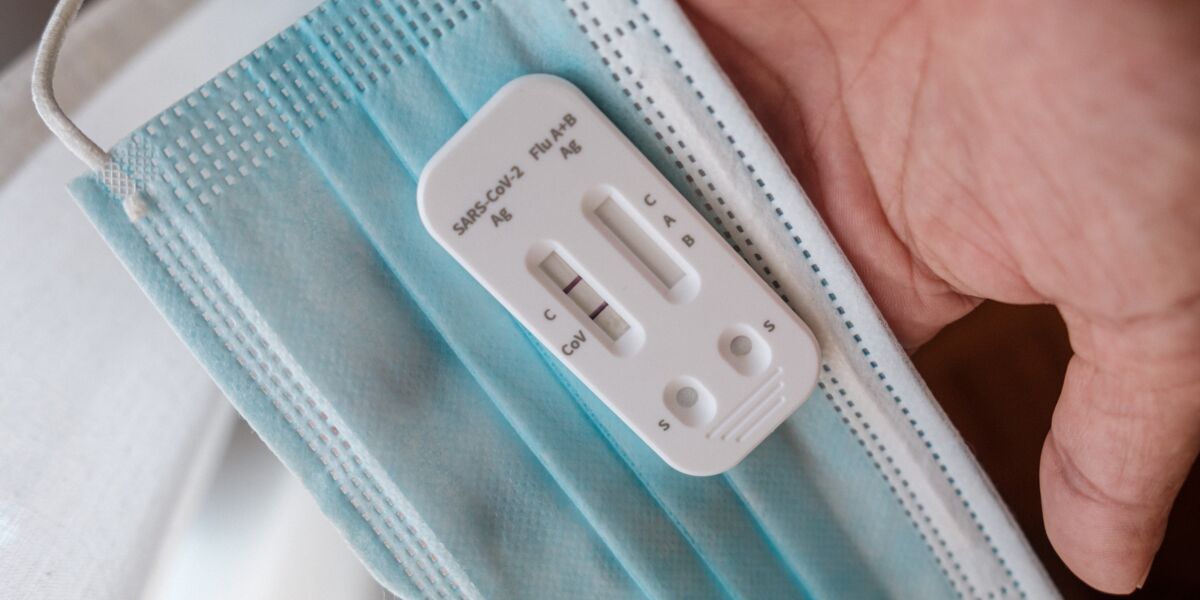The Pirola covid variant is popping up on everyone’s radar as a fresh reason for concern in the ongoing pandemic. As COVID-19 infection rates rise in the UK, validated by many expert analyses and studies, attention is shifting toward this new variant. There are only four known cases of Pirola covid variant in the UK, but with winter fast approaching, the potential for it to spread raises serious questions.
This article explores the risks, potential impacts, and what experts say about the Pirola covid variant as the UK gears up for the colder months ahead.
Table of Contents
What is Pirola and Where Did It Come From?
Pirola, also known by its scientific name BA.2.86, is described as a “mutated cousin of Omicron,” which implies it is a variant of the SARS-CoV-2 virus closely related to the Omicron variant. This new variant was initially detected in Israel and Denmark. It is one of over 600 Omicron sub-variants currently in circulation, according to the World Health Organisation (WHO).
Significance of the Spike Protein Mutations
“Pirola covid variant has sparked attention because it has 35 mutations on its spike protein, the part of the virus that Covid vaccines are designed to target.” The spike protein is a critical part of the virus that allows it to infect human cells and is the primary target of most COVID-19 vaccines. A high number of mutations in this region could potentially affect the effectiveness of existing vaccines or the virus’s transmissibility, although this is yet to be confirmed.
Naming Conventions
The Pirola covid variant has been tentatively named ‘Pirola,’ a catchy name designated by online virus trackers. This name could be shortened to ‘Pi,’ the Greek letter that follows ‘Omicron,’ if the WHO designates it as a ‘variant of interest.’
Is It More Deadly?
So far, no evidence suggests that the Pirola covid variant is more deadly than previous variants. Virologists caution that it is too early to tell if the variant has unique symptoms or presents a different threat level than other strains. The WHO has confirmed that no deaths have been reported among cases with this variant, and it is under ongoing assessment.
Caveats
It is essential to remember that as more data is gathered, our understanding of the Pirola covid variant may change. The potential impact of the high number of mutations in BA.2.86 is unknown and under assessment.
Current Situation in the UK
As the UK heads into autumn, healthcare professionals and the public are on high alert due to a new variant known as Pirola (BA.2.86). This comes amid a general rise in COVID-19 cases and hospital admissions in the UK.
Cases on the Rise
Yes, the situation is concerning. “Covid cases in the UK are rising sharply — almost doubling in a month — just as the country heads into the autumn when the NHS gets busier.”
According to data from the ZOE health study, there were 93,432 new daily cases of symptomatic infection on September 2, up from about 50,000 at the start of August. This study estimates that approximately 1.17 million people in the UK currently have the virus, equating to roughly one in 57 people. However, it’s worth noting that the peak of the pandemic in cases was in late March 2022, when around 4.9 million people were thought to have the virus.
Hospital Situation
Recent data reveals that daily Covid hospital admissions have risen almost 30% since June, with a seven-day rolling average of 322 as of August 25, compared to just 251 on June 7. Although UK Health Security Agency (UKHSA) data released on August 31 shows a slight plateau in hospitalisations, these figures lag behind the actual infection rates due to the time it takes for someone to catch the virus and require medical care.
Pirola Covid Variant in the UK
As of the latest update, four known cases of the Pirola covid variant have been confirmed in the UK. These cases were identified through hospital testing, and none of the patients had a known recent travel history. The variant has also been found in wastewater testing in Scotland.
The situation is fluid, and health experts are closely monitoring the data. Hospitalisation levels are not as high as those seen earlier in the pandemic, but the increase in cases and the emergence of the Pirola covid variant warrant caution.
The real extent of Pirola’s threat remains uncertain, and experts are assessing its potential impact. The big questions—how dangerous Pirola is, what preventive measures should be taken this winter, and whether another lockdown is likely—are all under evaluation as authorities gather more information.
How is Pirola Different?
The Pirola (BA.2.86) variant of COVID-19 has caused heightened concern among scientists, public health officials, and the public alike. Despite this, some early analyses suggest a more nuanced picture. “There is currently no evidence that Pirola is any more of a threat than the dozens of strains that have come before it.”
Global Presence
Global cases of the Pirola have doubled in the last week and have now been detected in the UK, US, Israel, Denmark, South Africa, Portugal, Sweden, France, Canada, Thailand and Switzerland.” Pirola has a global footprint, having been detected in four continents.
Will Pirola Covid Variant Lead to Stricter Measures?
The looming concern of another lockdown due to the Pirola covid variant is on many people’s minds. However, experts and government officials suggest it’s not a likely outcome.
Government Stance
The UK Government has insisted it won’t revert to pandemic-era measures like lockdowns unless a “doomsday variant” emerges. This aligns with the broader sentiment that stricter measures are unlikely.
Expert Opinions
Dr Clarke told MailOnline that the chances of lockdown or tiered restrictions are “vanishingly small.” Such measures would only be considered if a new variant or disease could overwhelm existing immunity levels. Similarly, Professor Hunter noted that the harms from a potential lockdown would now likely outweigh the benefits. He added that the value of non-pharmaceutical interventions, like mask-wearing, has decreased significantly since the early days of the pandemic.
Professor Lawrence Young, a virologist at Warwick University, expressed a similar viewpoint. He doesn’t see a situation where severe mitigation measures will be necessary or acceptable. However, he warned that due to the unpredictability of COVID-19, it can’t be entirely ignored. He added that offering free lateral flow tests and other mitigations like masking and ventilation would help protect the vulnerable and contain the virus.
“Experts agree it is unlikely Britain will see severe mitigations like lockdown again.”
Current Treatment and Testing Protocols for the Pirola Covid Variant
The emergence of the Pirola covid variant has raised questions about the effectiveness of current treatments and the availability of testing. “According to the CDC, existing tests to detect and medications used to treat Covid — such as Paxlovid, Veklury, and Lagevrio — appear to be effective with BA.2.86.” Here is a breakdown of what is known so far:
Treatment Options
- Paxlovid
According to the CDC, Paxlovid, a Pfizer antiviral pill used for treating mild to moderate cases of COVID-19, appears to be effective against the Pirola variant.
- Veklury (Remdesivir)
According to the CDC, an antiviral medication originally developed for Ebola, Veklury, also appears effective in treating the Pirola variant.
- Lagevrio (Molnupiravir)
The CDC also lists another antiviral pill by Merck & Co. as potentially effective against Pirola covid variant.
Testing Availability and Costs
- Lateral Flow Tests
These tests are no longer free and can be purchased for £2 at pharmacies on the High Street or online.
- PCR Tests
Offering a more definitive indication of infection status, these tests cost around £50 each.
Vaccination Efficacy
Early expert analysis suggests that Pirola covid variant may have some ability to dodge the immunity offered by vaccines and prior infections. However, Steve Russell, Chief Delivery Officer and National Director for Vaccinations and Screening at NHS England, noted that while it’s difficult to predict the overall impact of the variant, immunity is likely to still hold up to some extent.
Preventative Measures
Despite the effectiveness of existing treatments, prevention is still highly advised. Brits are urged to test for the virus if they have symptoms to reduce the chance of spreading it, especially to vulnerable individuals.
However, it’s crucial to emphasise that much is still unknown about Pirola covid variant. High levels of protection against previous variants have allowed the UK to relax COVID-19 measures substantially, but the emergence of Pirola covid variant could require reevaluation of these policies.
Personal Strategies for Prevention
As the Pirola covid variant continues to spread globally, it’s crucial to adapt and strengthen personal strategies for prevention. While vaccines and antiviral medications remain important tools in combating the virus, individual actions can play a significant role in kerbing the spread. Below are some personal strategies to protect yourself and others against this new variant.
- Frequent Handwashing
Keep washing your hands with soap and water for at least 20 seconds, especially after being in public places or coughing/sneezing.
- Wear Masks
Even though mask mandates might have been lifted in some places, wearing a mask, especially in crowded indoor settings, remains a good preventative measure.
- Social Distancing
Maintain a distance of at least 6 feet from others in public spaces, especially those coughing, sneezing, or not wearing a mask.
- Full Vaccination
Ensure you have received the full set of COVID-19 vaccines, including any booster doses if recommended for your age and health status.
- Ventilation
Ensure to ventilate indoor spaces well, as poor ventilation can increase virus transmission.
- Clean and Disinfect
Regularly clean and disinfect commonly touched surfaces like doorknobs, light switches, and mobile phones.

